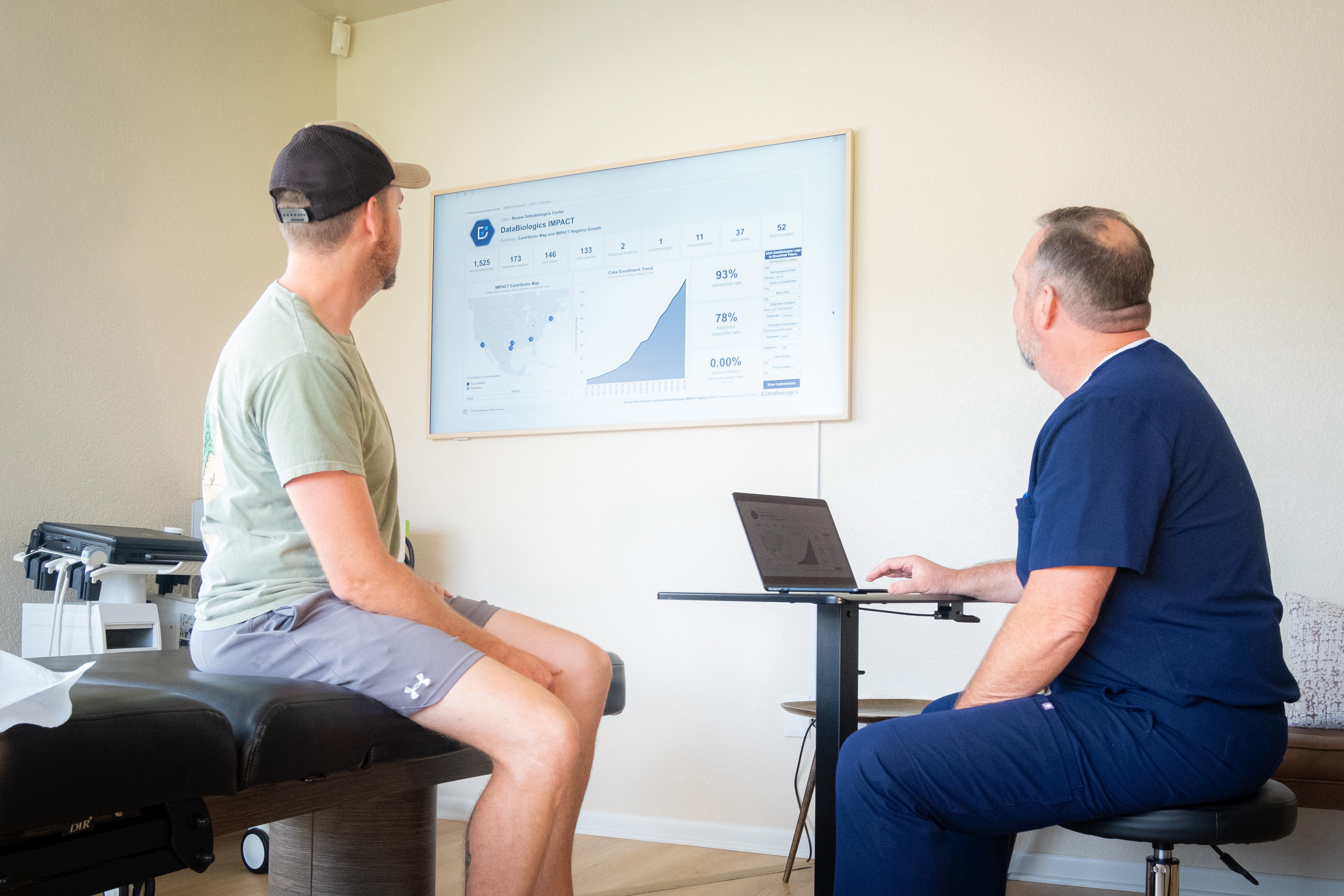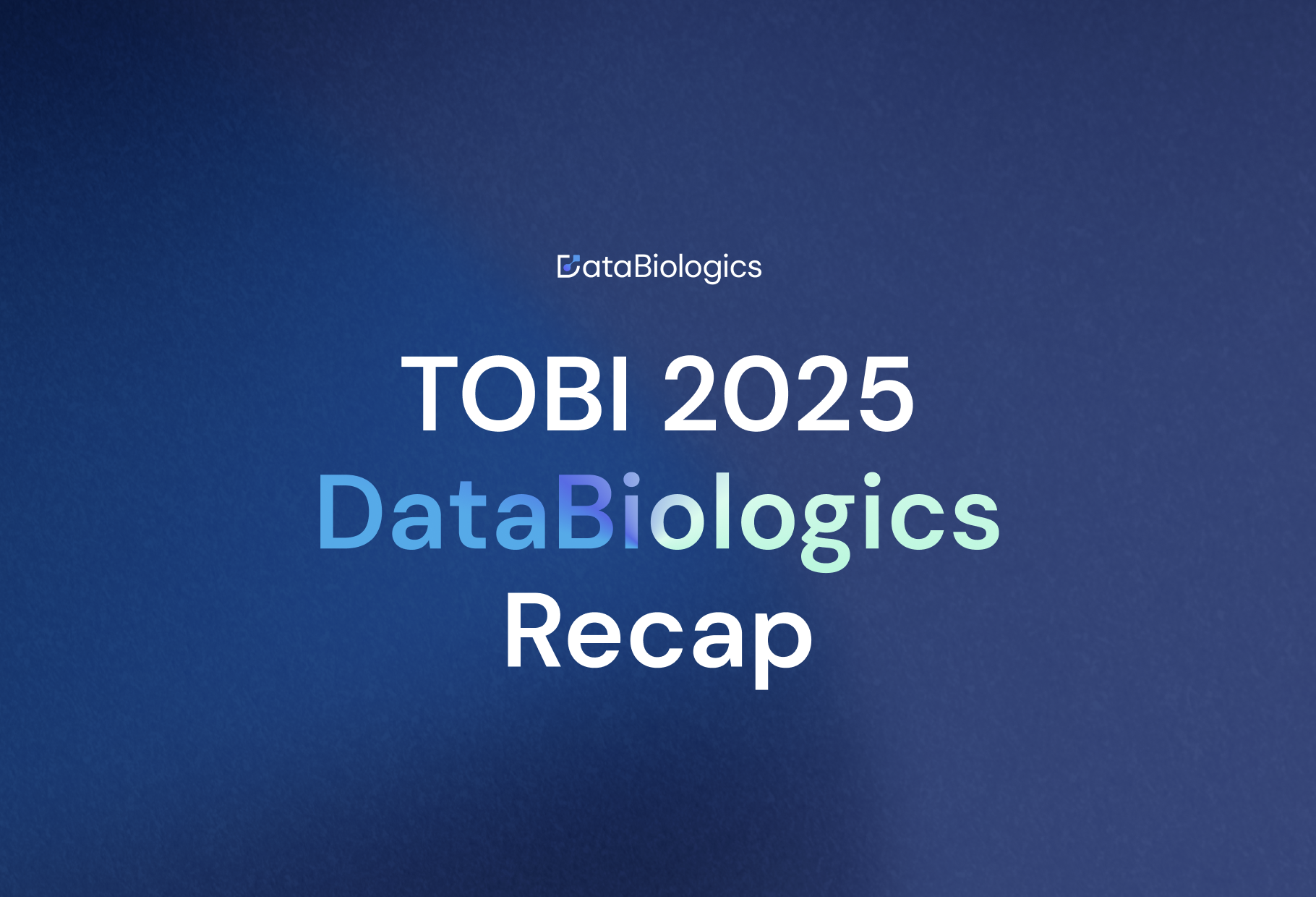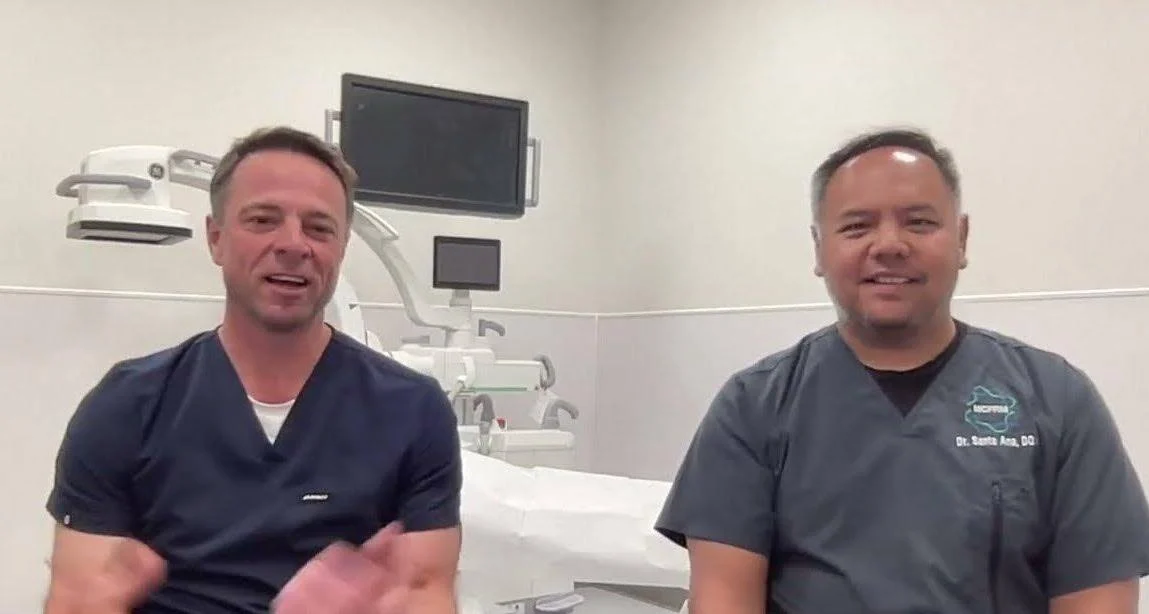Challenge: Accessing timely, actionable outcomes data to guide patient care and evaluate treatment performance in real time.
Solution: Using the DataBiologics platform to collect, filter, and present real-time outcomes data during patient consults to enhance decision-making and set expectations.
From Frustration to Flexibility
Dr. Chrisopher Miars, founder of Renew Orthobiologics (Waco, TX), has long-known the value of tracking real-world outcomes data, but the tools that were available to him weren’t keeping up.
“The reporting capabilities were not at all helpful. I had to basically ask them every quarter to give me a one-quarter update that they would send as an Excel file. As opposed to with this [DataBiologics] I can just check at any point.”
The previous platform’s limitations also impacted the clinic’s ability to gather complete and consistent patient-reported outcomes. Lengthy, overly complex surveys led to low compliance and valuable insights were often lost.
“Patients have now come for further interventions here and commented that the number of questions is appropriate instead of asking everything under the sun,” says Miars. “So our compliance for follow-up was much lower [with the previous tracking system] because there was just fatigue in response.”
From Data to Decision Making
With DataBiologics, Dr. Miars now has the ability to instantly access and filter his clinic’s data — including responder rates and satisfaction scores. This has transformed the way he approaches consults at Renew Orthobiologics.
With a wall-mounted frame TV in the exam room, he shares personalized outcomes using visual dashboards from the platform.
“I had a consult where someone was like, ‘What are the chances that this is going to do nothing?’ And now I can give you an idea based on numbers that are out there,” says Miars. ”I’ll just AirPlay and we’ll talk about the condition, the intervention, and show the graph that shows the responder rate and satisfaction rate.”
This visual, data-backed approach helps patients feel more confident in their decisions, particularly when treatments involve out-of-pocket costs.
“Especially when people are having to pull out their credit card being able to say, ‘Here’s the likelihood based on what we know,’ I think that’s super helpful.” says Dr. Miars. “It helps them to have that more objective, ‘Here’s the likelihood. Expectation management obviously is a big part of what we do, because as much as we’d like everybody to get better, obviously they don’t.”
Looking Ahead
As his outcomes data grows, Dr. Miars is excited to begin benchmarking his results against national averages and uncover what’s working.
“We’re still early, and my numbers are small, but I’m encouraged with the results we’re having. As the ‘N’ gets larger, we’ll see if we just had great responders or if our combination of the way we’re doing things is having better-than-average outcomes.”
Stop Guessing. Start Tracking.













